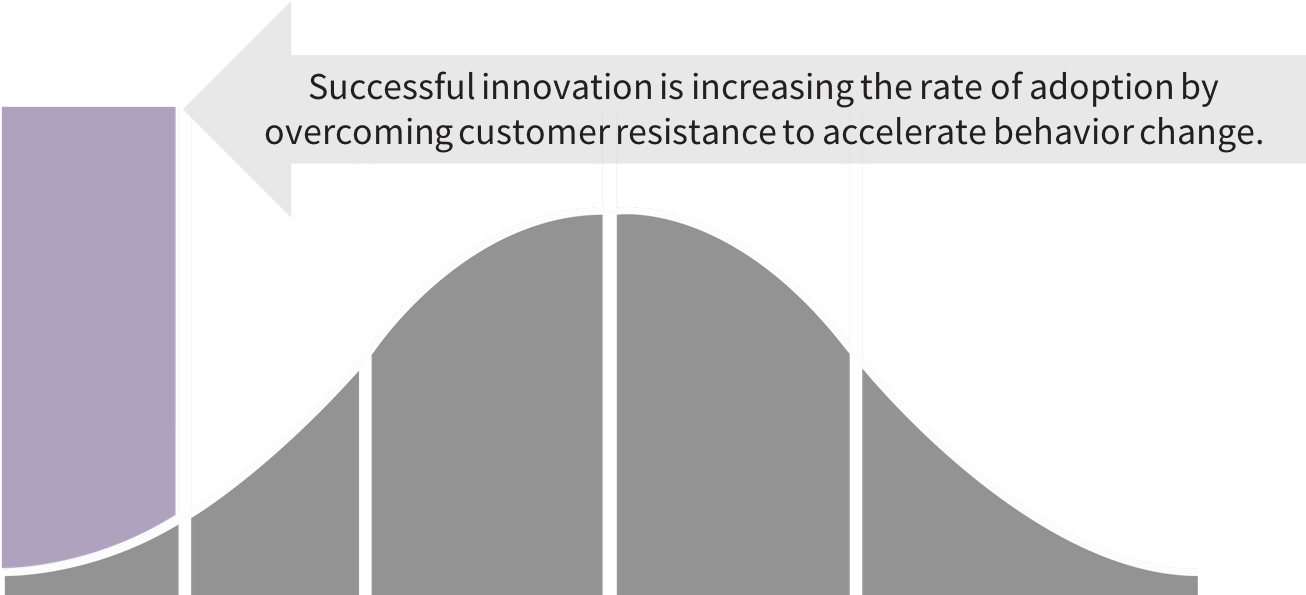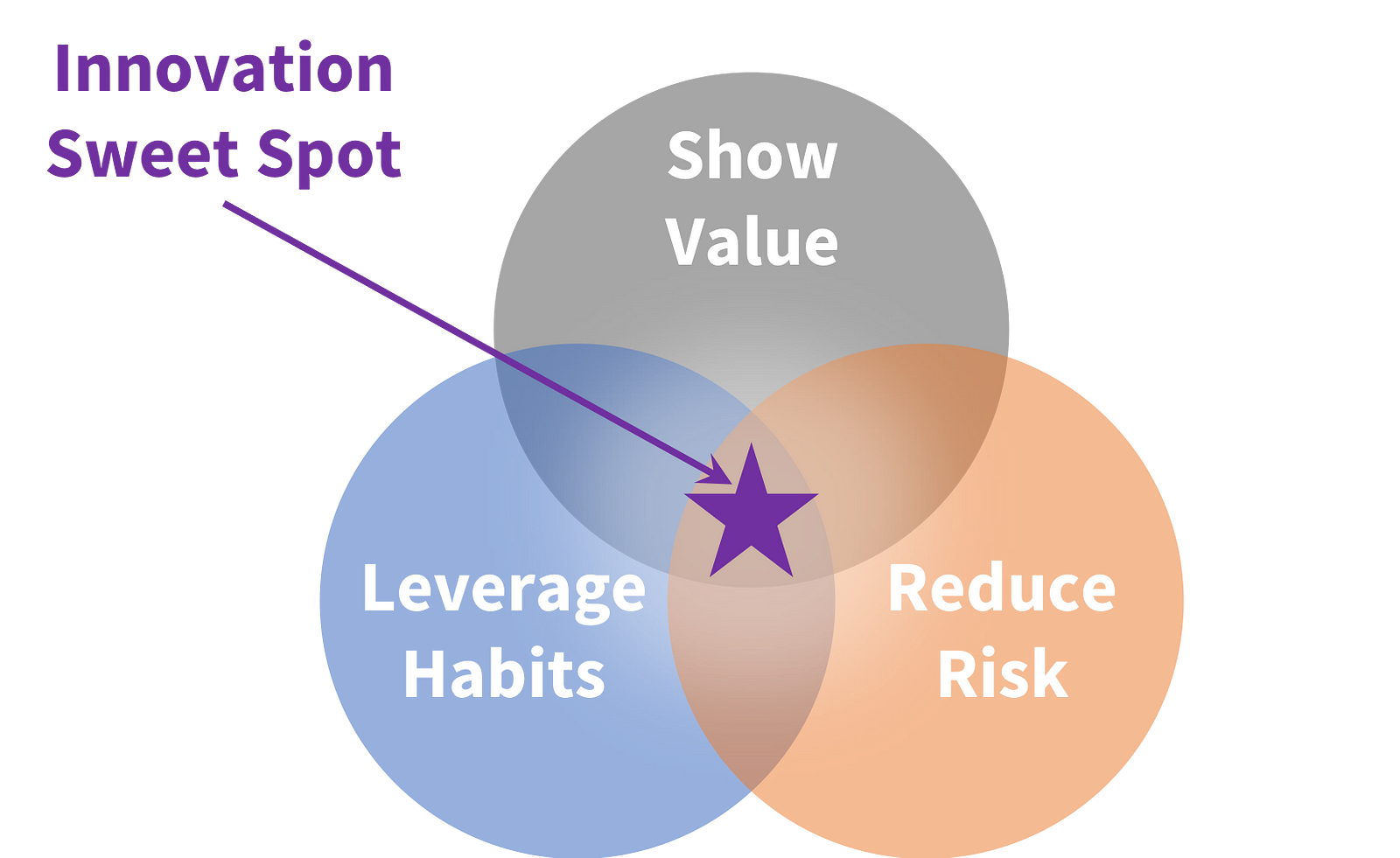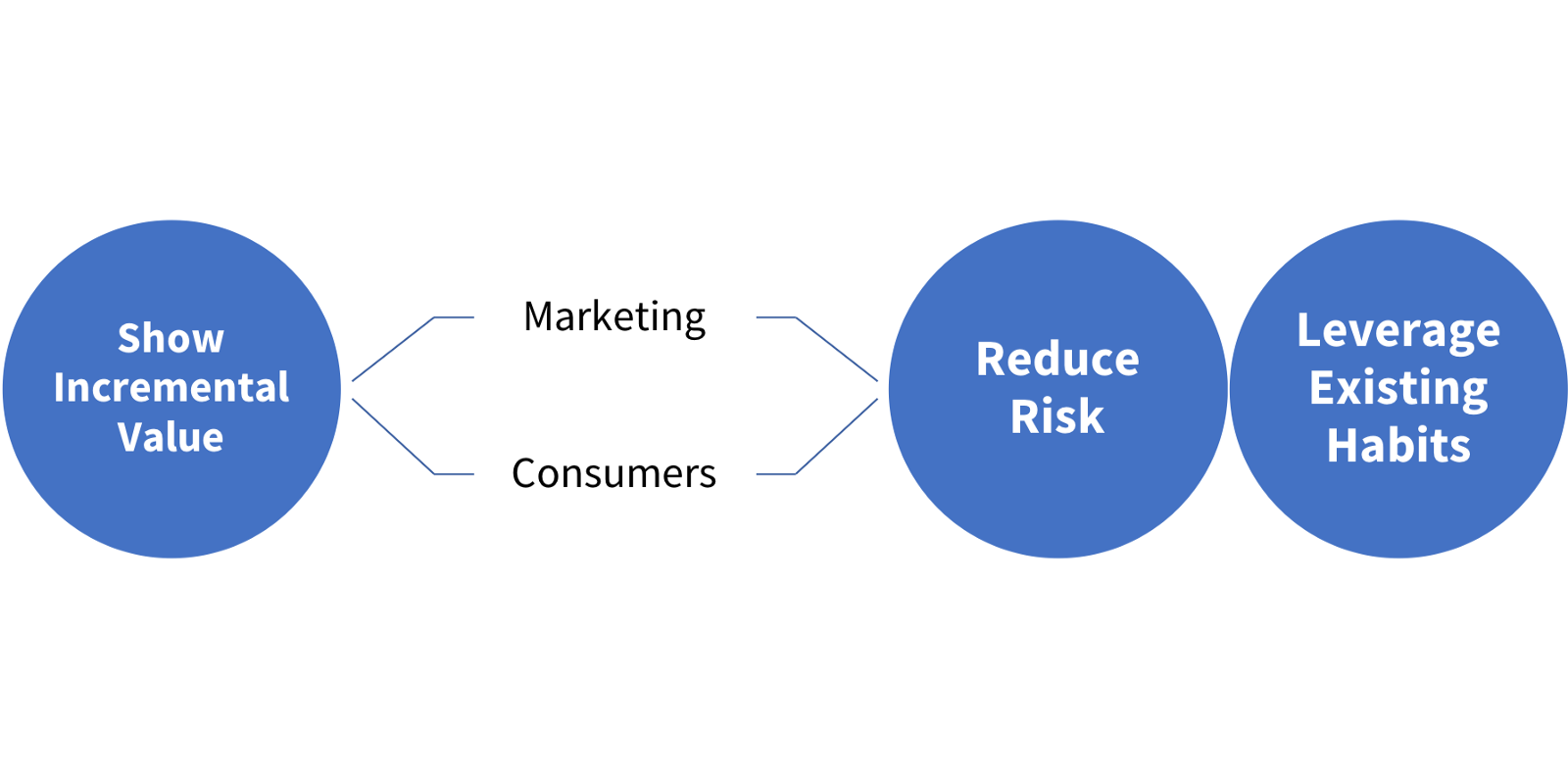Innovation success is largely achieved by getting customers to adopt as quickly as possible. Despite businesses relentless focus on innovating new features, benefits, and solutions, they forget the #1 issue preventing the adoption of new products – changing customer behavior. What stands in the way of adoption is the consumer resistance to change. Therefore, innovation success is highly reliant upon reducing consumer resistance to change. This article reveals the plague of new product success the “Pro-change bias”, and uncovers the 3 factors needed to optimize the uptake of new innovations.

Pro-Change Bias is Preventing Innovation Success
My mother was having issues with her phone bill so I took the initiative to call AT&T to find a resolution. While on the call the AT&T service rep mentioned an upgrade to the account to save $80 a month. My natural reply was “Ok… so what’s the catch?” He said, “no catch, AT&T upgraded its networks 8 months ago and we’re offering customers better packages at lower prices — no changes to our plan and no hidden fees.” My mom perceived a change and avoided the ‘upgrade’ missing out on over $900 in savings a year.
My mom’s behavior to not adopt the new plan and additional savings illustrates the potent human tendency to strive for consistency and status quo rather than to continuously search for, and embrace new. Even if adopting a new behavior is as effortless as saying “yes” change still involves uncertainty which makes it psychologically hard. Innovation implies new, change and different causing friction on mental and behavioral routines and ultimately customers not adopting innovation and sticking with what they are used to.
To market successful innovations, we need to shift our thinking from why customers adopt to why they resist.
To Overcome the Pro-Change Bias we need to brush aside the assumption that consumers are being “open” and “willing” to change and embrace the fact that consumers strive to maintain their deep-seated habits. We can overcome the pro-change bias by finding The Innovation Sweet Spot…

1. Show Value
Most innovations are designed to add value above the current state of affairs in the market. Yet, most face the challenge of communicating their value in an environment with overwhelming choices and shrinking attention spans. To be considered and chosen, consumers need to quickly and intuitively see the value of the new product. Without a motivational incentive, consumers are not likely to pay attention and end up choosing their routine brands. To capture customers dwindling attention spans by focusing on multi-sensory engagement to help customers see, feel and experience new innovation value. Consider these two approaches to helping customers see value…
- Tell Stories. Craft a relevant story of value that resonates with your customers. Amazing how Apple takes an excessively priced iPhone and threads together a compelling narrative that results in more buying and upgrading their phone each year. Features and benefits matter but stories wrap the new product into a cultural narrative that helps sell the larger value proposition.
- Engage Senses. Customers perceive and experience value through all five senses and the more we communicate to all senses can provide rich experiential benefits to help customers see and feel value.
- Use Heuristics. Heuristics are mental shortcuts that help customers process information and make quick choices. For example, by adding green to packaging can symbolize natural or healthy – relevant features valuable to customers. Finding the cues that customers use to choose can help communicate the value of the product and win the war at the shelf.

2. Leverage Existing Habits
Our brains are wired to preserve our habits and daily routines. Most new products disrupt routines. With the human tendency to strive for consistency rather than continuously search for and embrace new products, brands should focus on planting innovations into customers existing routines. For example, instead of P&G launching another effortful step in the laundry process, gracefully tucked the Downy In-Wash Scent Boosters into the laundry routine, creating one of the most successful product launches in the past decade. 
By understanding customers’ behavioral patterns, brands can effectively position new products to enhance customers’ lives as opposed to add friction. The ability to disrupt a consumer habit and adopt a new and likely unfamiliar product innovation is possible but psychologically harder. Therefore, to increase the odds of adoption the focus is not to disrupt our daily life habits but to show how innovations work with customers’ existing habits.

3. Reduce Risk.
New simply means risky. Whether it’s a new soda – will it taste good? A new smartphone – are the features good? Or the new clothing brand–will my friends approve? Customers face crippling uncertainty with adopting products they are not used to or familiar with. Therefore the goal to accelerate adoption is to reduce risk and uncertainty with the new innovations.
Customers perceive risk on many levels beyond economic risk (is the new computer worth the price). New products have social risks (what will people think of my new outfit?), physical risks (health consequences of soda) and psychological risks (how will this product make me feel?). Making benefits to ‘innovations’ crystal clear is necessary but insufficient to accelerate adoption. We need to also appeal to deep human needs of safety and security by removing uncertainty and risk.
Tactics to reduce uncertainty…
- Analogies – Facilitate consumers’ assessment of new product benefits (e.g., Airbnb of Car rentals, Tide Pods of Dishwasher)
- Perceived popularity – Helps consumers’ make it feel widely adopted and ‘normal’ to buy (e.g., #1 rated mattress)
- Reviews – Helps show other consumers’ are using and satisfied with the product (e.g., 5,000 – 5 stars reviews)
- Categorization Cues – Helps consumers to better understand the new product’s features (e.g., a new product with familiar benefit)
- Product Demonstrations – Help consumers to familiarize themselves with the new product’s characteristics
- Mental Simulation – Help consumers to align the new product with existing usage patterns
- Warranties – Removes perceived risk (e.g., Cancel anytime, No-question asked returns)

By applying behavioral economics we can accelerate adoption and diffusion to achieve the breakthrough success of innovations. Success hinges on our ability to communicate, at a conscious and subconscious level, that innovations
- Adds incremental value
- Enhances existing habits
- Reduce the risk associated with a purchase
Stated differently, we need to shift our thinking from “why customer adopt” to “why they resist innovations”.
